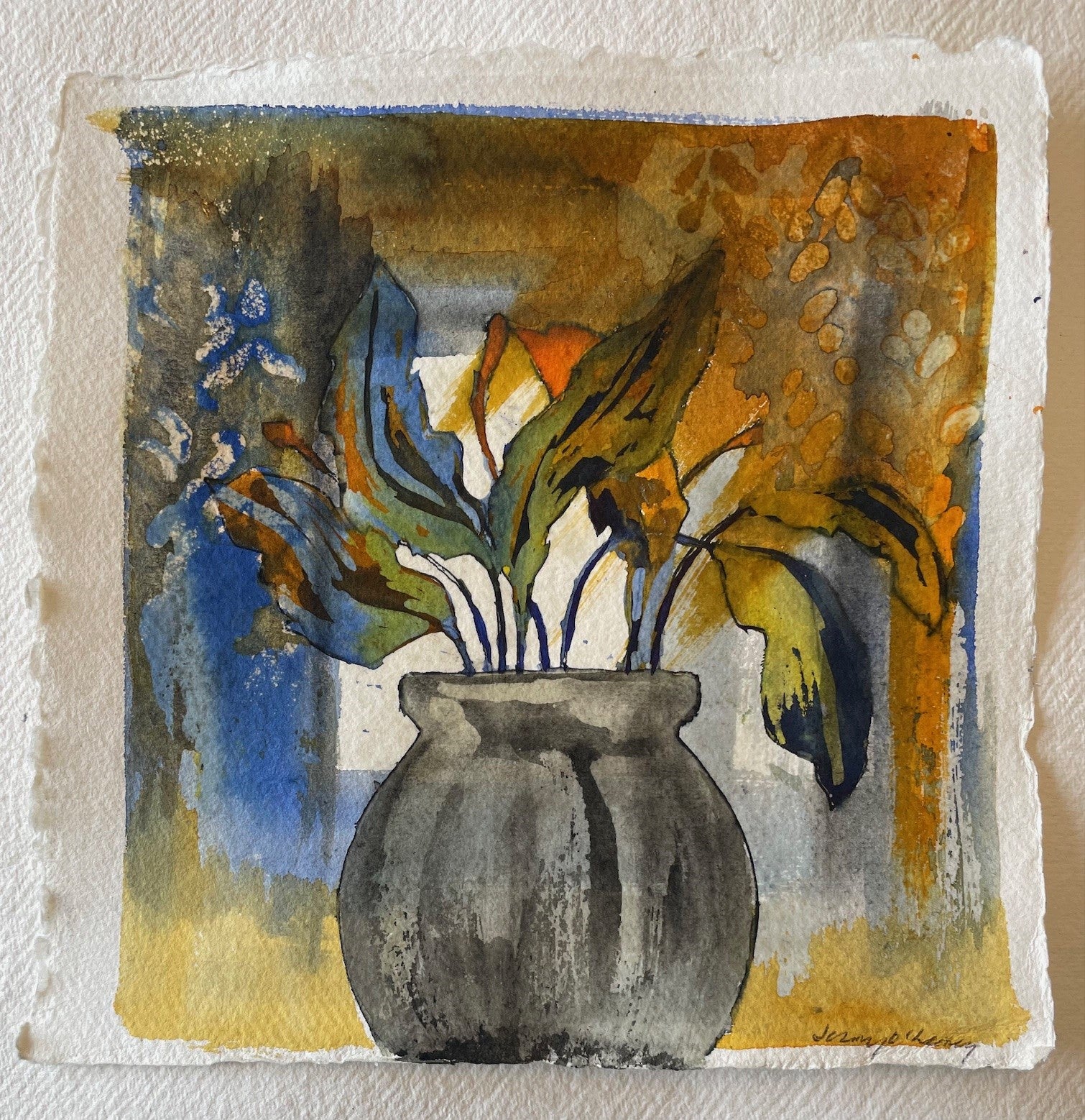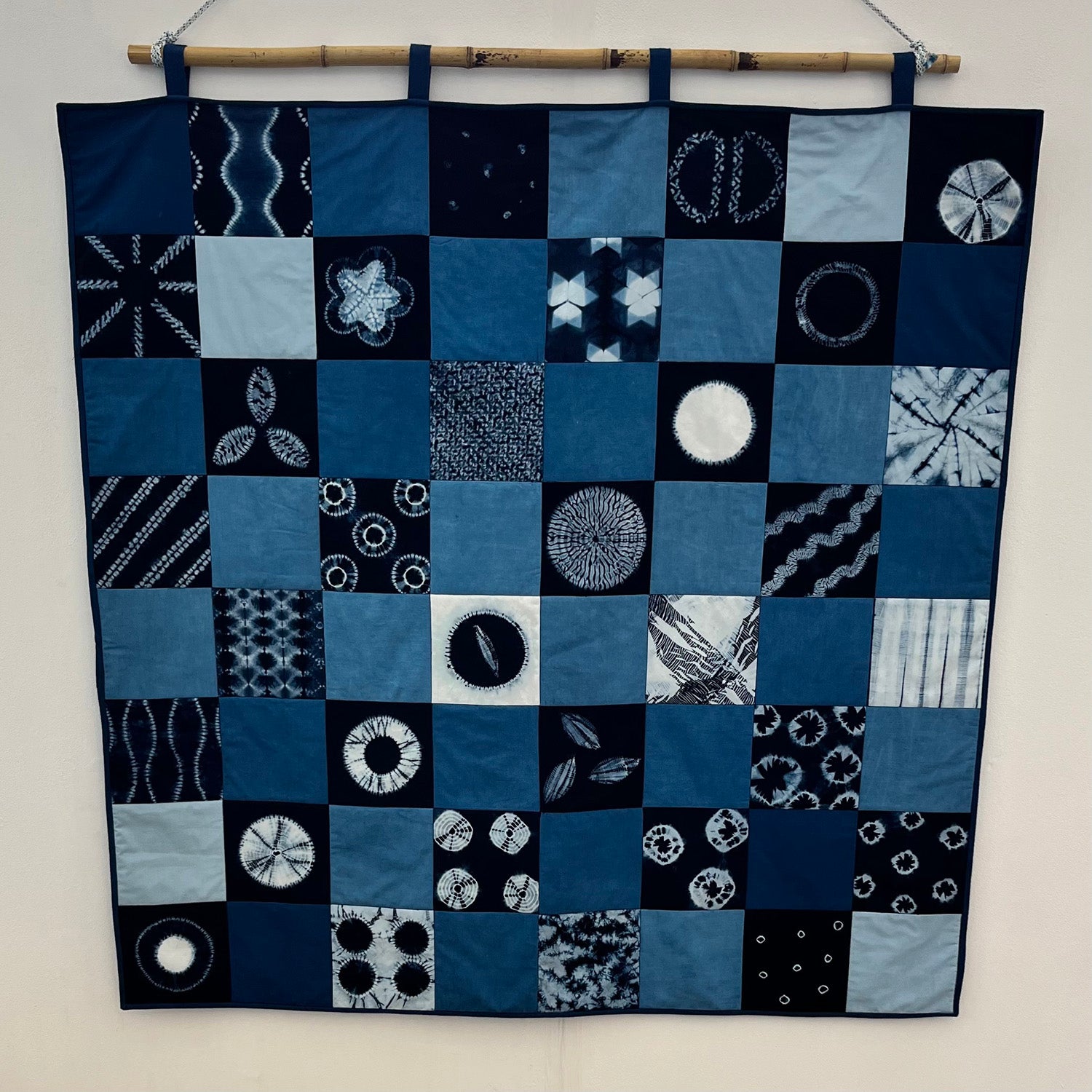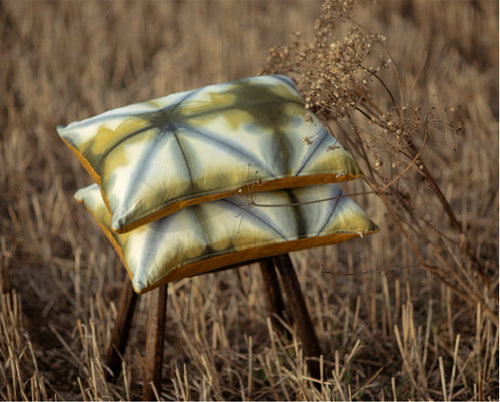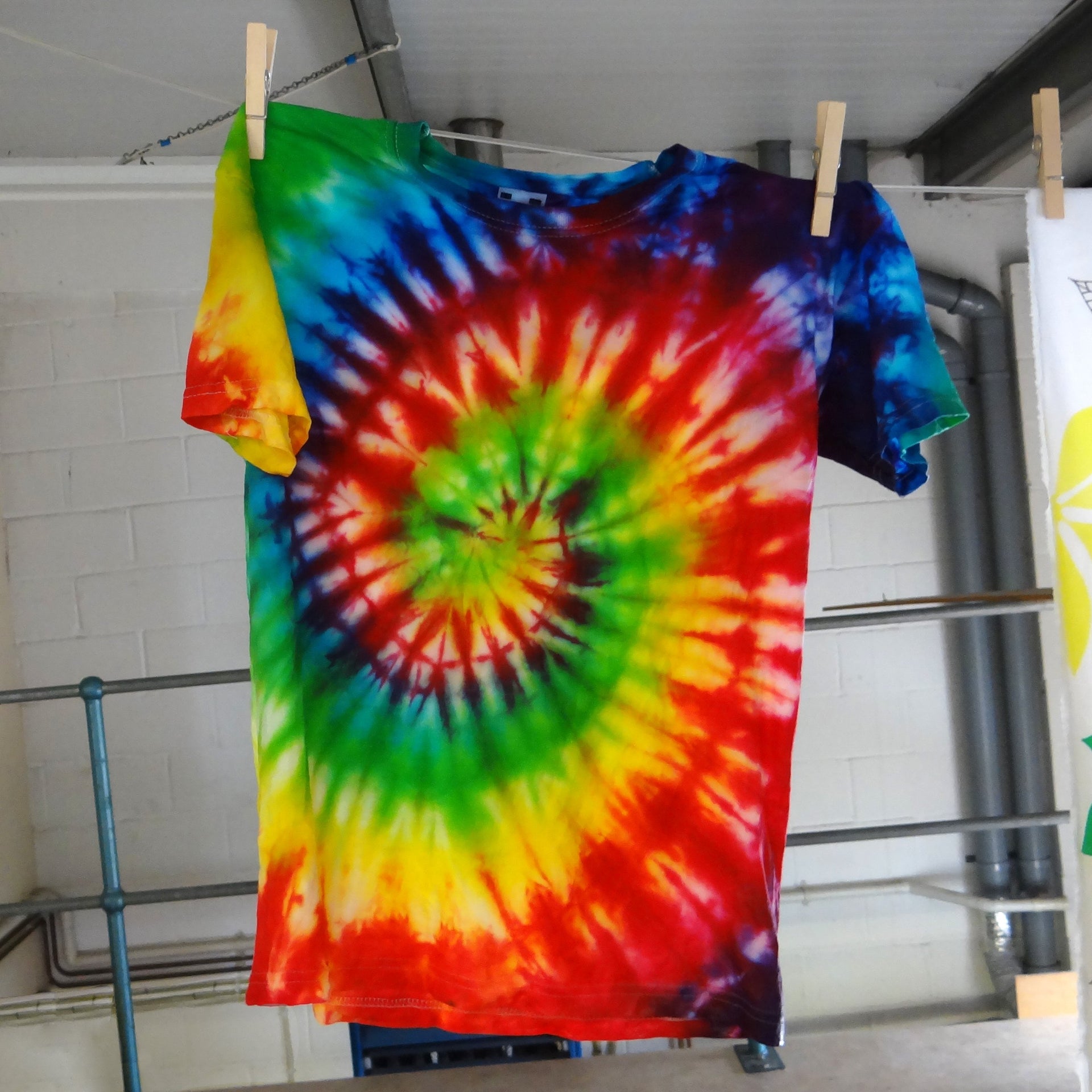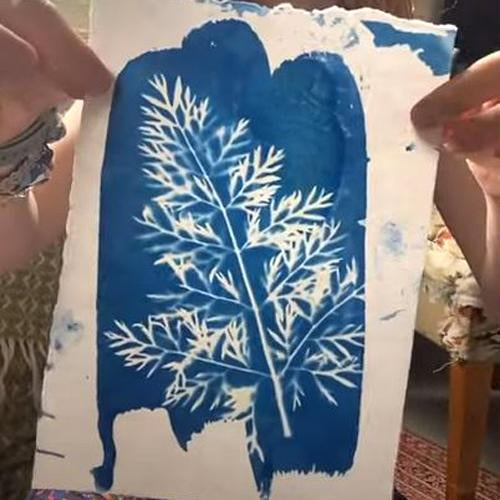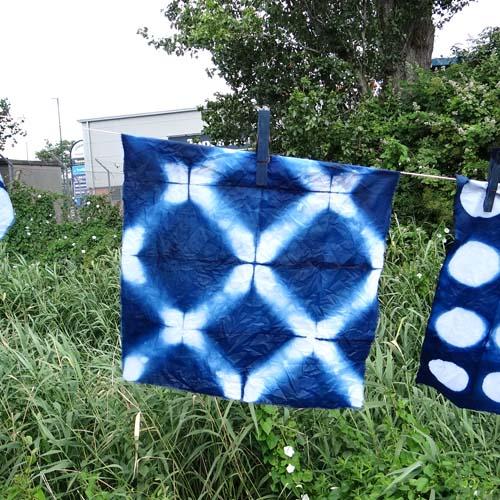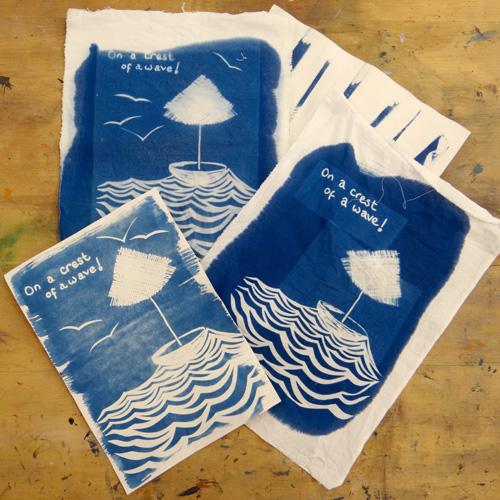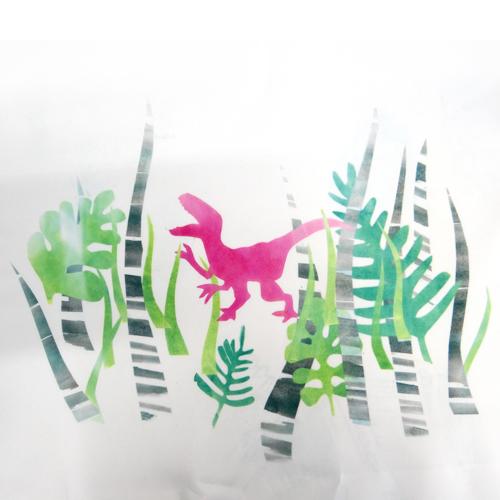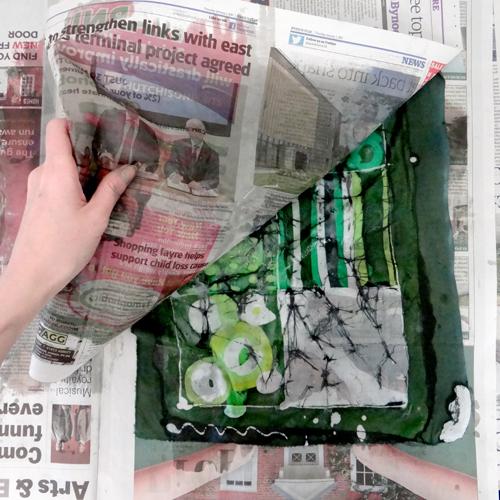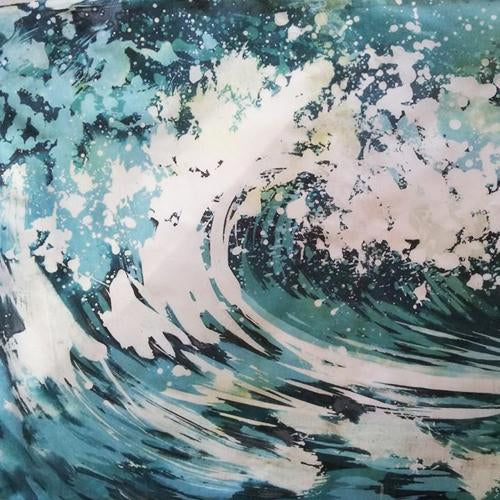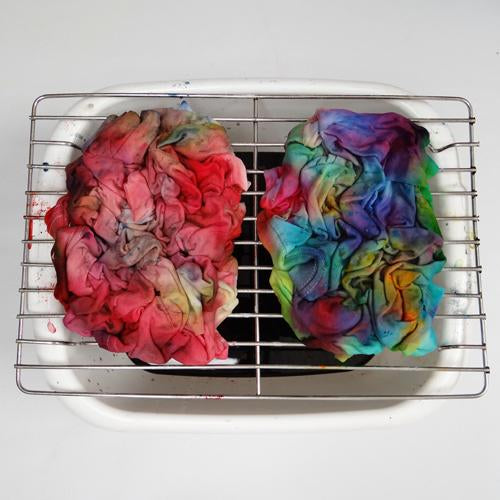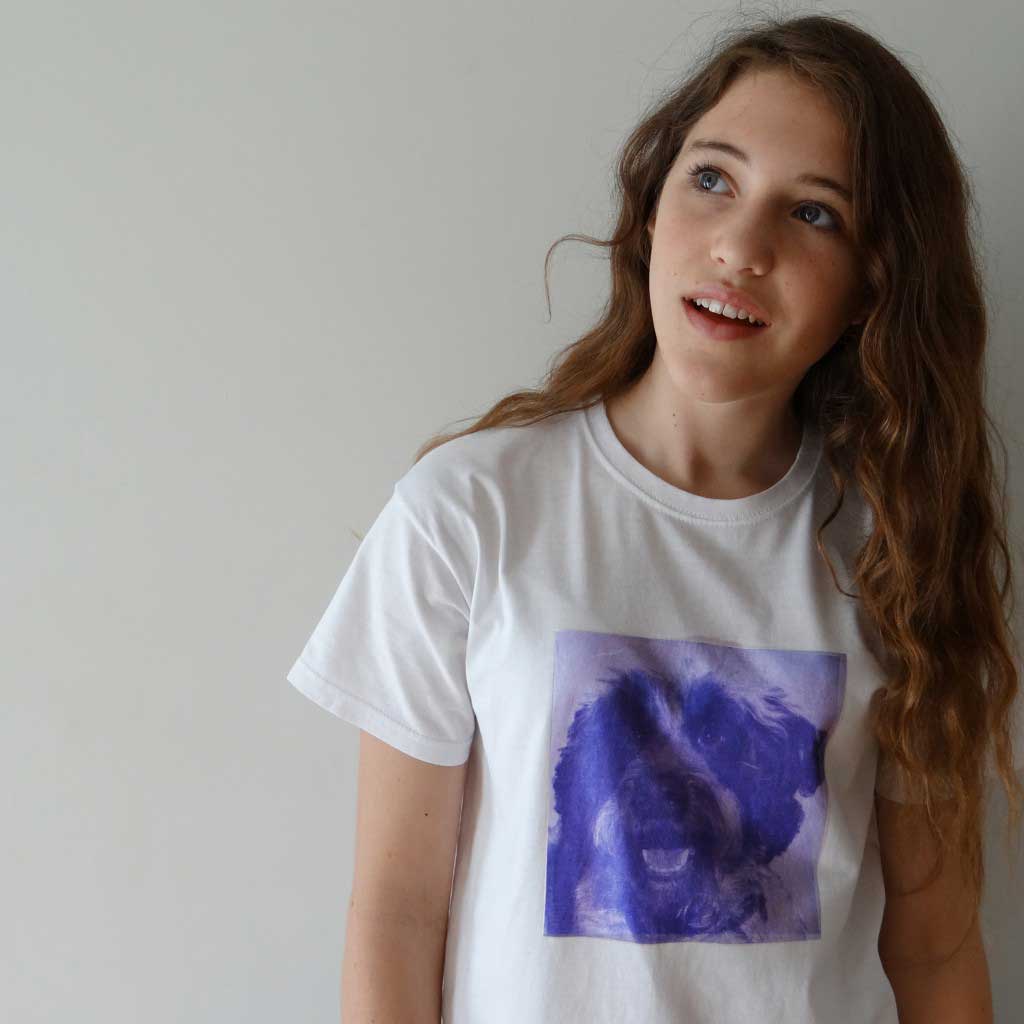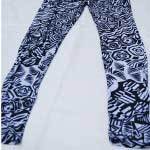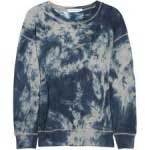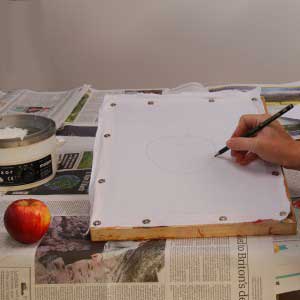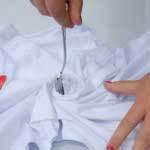Blog - Dyeing
-
Hi, my name is Jenny O’Leary and I am a textile artist and tutor living in Shropshire. I work with batik (hot wax resist), mainly on tissue paper - combining it with bleach, ink and dyes. I sometimes stitch to create beautiful surfaces and textures. Collage and layering are an important part of my work...
-
I am a textiles artist working with Japanese techniques such as Shibori, shaped resist and Katagami stencilling (using indigo to dye the fabric). I also work with formal Japanese embroidery techniques - Sashiko and Kogin (counted thread) embroidery as well...
-
I am a textile artist and tutor, specialising in dye and print processes to create organic, layered and textural art textile pieces for exhibition, in addition to cap...
-
You only need three colours of dye to create this amazing rainbow tie dye T-shirt. This is a brilliant project to work on with children as it can be used to teach about primary and secondary colours and colour mixing. Peg the centre of your T-shirt with a clothes peg. You will need to choose …
-
Cyanotypes (sometimes called blueprints or photograms) are made using a really old process that uses light to create designs on fabric and paper. Scroll to the bottom of the page to watch a video on the process or read on. We are going to need a cyanotype kit. The kit contains two bottles, each with …
-
Brusho is a fantastic dye to have in your creative kit. They come in little pots of watercolour crystals in a huge range of highly-pigmented colours. They can be used on lots of different surfaces but we especially like to use them on fabric. They’re not fixable on cloth so aren’t suitable for projects that … Continue reading "Brusho Dye Resist Painting"
-
Indigo has been used to dye fabric in many cultures for centuries. Traditional Shibori folding techniques combined with indigo dye can create beautiful fabrics with intricate patterns with both subtle and bold shades of blue. Begin by preparing your dye vat. We are using an Indigo Dye Kit that includes all the ingredients for a …
-
Cyanotype is an early photographic process that uses two solutions (Potassium Ferricyanide and Ferric Ammonium Citrate) to create an image or ‘blueprint’. It was introduced by John Herschel in 1842 as a way to copy notes but was brought to the photographic world by Anna Atkins the following decade through her photograms of algae, seaweed, …
-
Transfer printing is a quick and playful printmaking method. The dyes require no fixative – only heat! They can be mixed up and left in a covered pot to use another day – they should keep indefinitely. Pour 100ml of warm water into a pot. Sprinkle 1tsp transfer dye onto the water. Use colours straight …
-
Making a batik is the satisfying process of layering wax and dye to create bold, intricate designs. The more layers of dye and wax that are added, the thicker and stiffer the fabric will become. At the end of this process, you’re left with a hard, milky-looking piece of cloth. Here’s how to iron the … Continue reading "Ironing the Wax out of a Batik"
-
There are several waxes that can be used for making batiks, all of which will produce slightly different results. Standard Batik Wax is a blend of beeswax and paraffin wax but soya wax makes a good alternative. Soya wax is more sustainable, plant based, natural and petroleum free wax. Our soya wax comes from renewable…
-
I don’t know about you, but thanks to years of being in school followed by forever being surrounded by children and teachers, Autumn will always signal the beginning of my year and a time to learn something new. This year’s September-knowledge-thirst led me to a weekend-long batik course run by Noel Dyrenforth in Hove. The …
-
We have been enjoying the sunshine here at Handprinted so we thought we would show you how to make a Summery top out of an old plain T-shirt using Colour Magnet and Procion Dyes! You will need: Light coloured T-Shirt Fabric scissors Pencil, paper and a fine paint brush Screen Parcel Tape Drawing Fluid Screen Filler …
-
You will need: White prewashed T-shirt Procion MX Dyes Soda Ash (fixative) Dust Mask Calgon PT (if you are dyeing in a hard water area) Rubber Gloves and an apron – these dyes will stain. Ice Cooling rack or similar Plastic bowl Bubble wrap or plastic bag Mix three tablespoons of Soda Ash with warm …
-
For this project you will need: A high contrast image SolarFast SolarFast Wash T-Shirt Brush/Foam Brush Newsprint/Newspaper A sheet of Glass OHP film or similar A sunny day! Create a negative image in a programme such as Photoshop by inverting a high contrast black and white image. We used one of our dog – Fletcher! …
-
These black and white leggings were purchased in the sale at New Look but never worn. We mixed up three squirty bottles of dye putting 1 teaspoon of Soda Ash, 1 teaspoon of dye and 1 teaspoon of Urea in each along with 200ml of warm water. The dyes we used were Golden Yellow, Scarlet …
-
One plain white, cheap cotton T-shirt, made to look very Isabel Marant! Here was our inspiration: Take one plain white T-shirt and soak it in water. Scrunch the T-shirt up and tie into a bundle. Mix 1 teaspoon of Charcoal Procion MX Dye with 100mls of warm water. Mix 1 tablespoon of Soda Ash into …
-
Next up was a cropped denim waistcoat. We wanted to dip dye it. This method can be used for a huge variety of garments. First we gave the complete waistcoat a good soak in a bowl of water. Mix 1 teaspoon of Procion MX Turquoise into 100ml of tepid water. Dissolve 3 tablespoons of table …
-
A simple guide to batik. Step 1 Pin the fabric tightly to a frame using silk pins or drawing pins. Draw the design on lightly using a pencil. Step 2 Mix up a dye base using 1 litre warm water with 10 tbsp Urea and 1 tsp of Calgon. Mix 1/2 tsp Lemon Yellow Procion …
-
Here is the last instalment of Tie Dyeing 5 Ways and it is a bit of a classic. We used the method for a Spiral Rainbow Tie Dye but only used two colours Scarlet Red and Bright Royal. We took a dry plain white T-shirt and placed a fork where we wanted the centre of …

